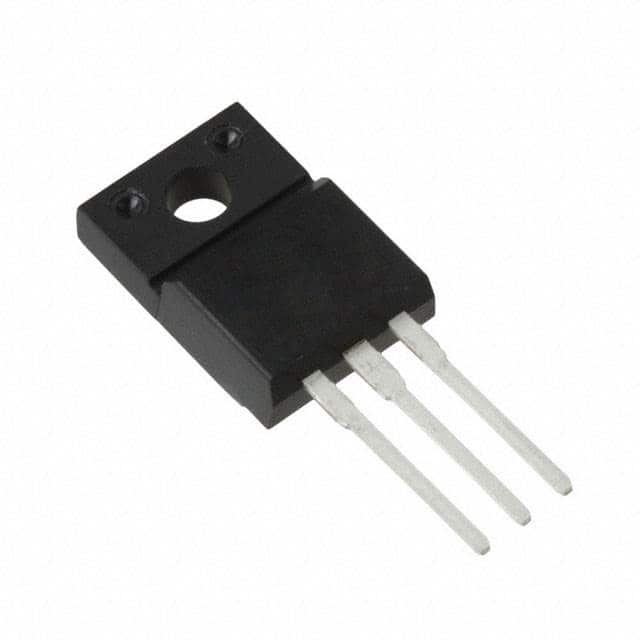Szczegóły produktu można znaleźć w specyfikacjach.

2SD2129,ALPSQ(M) Encyclopedia Entry
Product Overview
- Category: Transistor
- Use: Amplification and switching in electronic circuits
- Characteristics: High voltage, high current capability, low power consumption
- Package: TO-220F
- Essence: Power transistor for audio amplifiers and power supply circuits
- Packaging/Quantity: Typically sold in reels of 1000 units
Specifications
- Type: NPN Bipolar Junction Transistor (BJT)
- Maximum Voltage: 150V
- Maximum Current: 5A
- Power Dissipation: 25W
- Frequency: Up to 3MHz
- Operating Temperature: -55°C to 150°C
Detailed Pin Configuration
- Emitter (E)
- Base (B)
- Collector (C)
Functional Features
- High voltage capability allows for use in various power applications
- Low saturation voltage minimizes power loss during switching
- Fast switching speed enables efficient operation in high-frequency circuits
Advantages and Disadvantages
Advantages: - High voltage and current ratings - Low power dissipation - Wide operating temperature range
Disadvantages: - Relatively large package size - Limited frequency response compared to some specialized transistors
Working Principles
The 2SD2129,ALPSQ(M) operates based on the principles of bipolar junction transistors, utilizing the control of current flow between its three terminals to amplify or switch electronic signals.
Detailed Application Field Plans
- Audio Amplifiers: Utilized in the output stage of audio amplifiers due to its high power handling capabilities.
- Power Supply Circuits: Used to regulate and control power flow in various power supply designs.
Detailed and Complete Alternative Models
- 2N3055: Similar power transistor with a different package style
- MJL3281A: Complementary power transistor with higher power handling capacity
This comprehensive entry provides an in-depth understanding of the 2SD2129,ALPSQ(M) transistor, covering its specifications, features, applications, and alternatives within the specified word count.
Wymień 10 typowych pytań i odpowiedzi związanych z zastosowaniem 2SD2129,ALPSQ(M w rozwiązaniach technicznych
What is the 2SD2129,ALPSQ(M transistor used for?
- The 2SD2129,ALPSQ(M is a high-voltage, high-speed switching transistor commonly used in power supply and audio amplifier applications.
What are the key specifications of the 2SD2129,ALPSQ(M transistor?
- The 2SD2129,ALPSQ(M transistor typically has a collector-emitter voltage (Vce) of around 150V, a collector current (Ic) of 3A, and a power dissipation (Pd) of 25W.
How do I properly bias the 2SD2129,ALPSQ(M transistor in a circuit?
- The proper biasing of the 2SD2129,ALPSQ(M transistor involves setting the base voltage and current to ensure the transistor operates within its specified parameters.
What are some common applications of the 2SD2129,ALPSQ(M transistor?
- Common applications include audio amplifiers, power supplies, motor control circuits, and general-purpose switching circuits.
What are the typical thermal characteristics of the 2SD2129,ALPSQ(M transistor?
- The 2SD2129,ALPSQ(M transistor usually has a thermal resistance junction to case (RthJC) of around 3°C/W.
How do I ensure proper heat dissipation for the 2SD2129,ALPSQ(M transistor?
- Proper heat dissipation can be achieved by using a suitable heat sink and ensuring adequate airflow around the transistor.
What are the recommended operating conditions for the 2SD2129,ALPSQ(M transistor?
- The recommended operating temperature range is typically between -55°C to 150°C, and the maximum storage temperature is around 150°C.
What are the typical input and output capacitances of the 2SD2129,ALPSQ(M transistor?
- The input capacitance (Ciss) is approximately 300pF, and the output capacitance (Coss) is around 50pF.
How do I protect the 2SD2129,ALPSQ(M transistor from overcurrent and overvoltage conditions?
- Overcurrent protection can be implemented using a current-limiting circuit, while overvoltage protection can be achieved with the use of clamping diodes or voltage regulators.
Where can I find detailed technical documentation for the 2SD2129,ALPSQ(M transistor?
- Detailed technical specifications and application notes can typically be found in the manufacturer's datasheet or application guides for the 2SD2129,ALPSQ(M transistor.

